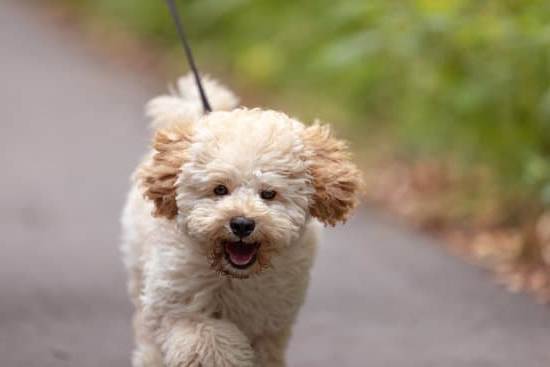Are you interested in learning how to train your puppy as a service dog? Service dogs play a crucial role in the lives of individuals with disabilities, providing assistance and support in various tasks. From guiding the visually impaired to alerting those with hearing loss, these specially trained dogs can significantly improve the quality of life for their handlers.
When it comes to training a puppy to become a service dog, it is essential to start with the right foundation. Choosing the appropriate puppy for service dog training is the first step in this rewarding journey. Whether you opt for a specific breed known for its service dog capabilities or select a mixed-breed puppy with potential, understanding your future service dog’s characteristics and temperament is key.
In addition to selecting the right puppy, basic obedience training is crucial for laying down the groundwork for further development. Teaching your puppy commands like sit, stay, and come not only builds a strong bond between you and your furry companion but also establishes fundamental behavior expectations. Stay tuned as we explore further steps in training your puppy to become an invaluable service dog.
Choosing the Right Puppy for Service Dog Training
When embarking on the journey of training your puppy as a service dog, one of the most crucial steps is selecting the right puppy for the task. Not every dog is suited for service work, so it’s important to choose a puppy with the right temperament, health, and characteristics that align with the specific needs of the role.
Temperament and Personality
When choosing a puppy for service dog training, look for traits like intelligence, eagerness to please, calm demeanor, and adaptability. These characteristics are essential for a successful service dog who can handle the demands of their job effectively. It’s also important to consider the breed tendencies and individual personality of the puppy to ensure they are well-suited for service work.
Health and Physical Abilities
In addition to temperament, ensure that your chosen puppy is in good health and has no underlying medical issues that could hinder their ability to perform as a service dog. Regular veterinary check-ups, proper nutrition, and exercise are all key components in maintaining your puppy’s health and ensuring they are physically capable of handling the training process and eventual responsibilities as a service dog.
Compatibility With Specific Needs
When selecting a puppy for service dog training, consider the specific tasks and functions they will be trained to perform based on your individual needs or requirements. For example, if you require mobility assistance, you may need a larger breed with strength and stability.
If you need emotional support or alert services, you may look for qualities like attentiveness and sensitivity in your chosen puppy. Matching the abilities and aptitudes of your puppy with your specific needs is essential in creating a successful partnership between you and your service dog.
Basic Obedience Training for Your Puppy
Basic obedience training is a crucial foundation when it comes to preparing your puppy for service dog work. This training will establish good behavior and manners that are essential for a service dog’s role in assisting individuals with disabilities. Teaching your puppy basic commands such as sit, stay, come, heel, and down will not only help in day-to-day interactions but also in more advanced tasks required later on.
Consistency and positive reinforcement are key during basic obedience training. Using treats, toys, or praise can motivate your puppy to learn and follow commands effectively. It is important to practice these commands regularly in various environments to ensure your puppy can respond appropriately no matter the situation. This training not only helps develop a strong bond between you and your puppy but also sets the stage for more specialized service tasks.
Additionally, incorporating leash training into the obedience routine is essential as it teaches your puppy to walk calmly by your side without pulling or getting distracted. Proper leash manners are vital for a service dog as they need to be able to navigate through busy public areas without causing any disruptions. By mastering basic obedience skills and leash manners early on, you are setting the groundwork for successful service dog training down the line.
Socialization and Exposure to Various Environments
Socialization plays a crucial role in the development of a service dog. Introducing your puppy to various environments, sounds, people, and animals from a young age will help them become more well-rounded and adaptable. Gradual exposure to different situations will build their confidence and reduce the likelihood of fear or anxiety in unfamiliar settings. This is an essential foundation for their future role as a service dog.
When socializing your puppy, it’s important to start with controlled and positive experiences. Choose quiet environments at first and gradually increase the level of distractions as they become more comfortable. Expose them to different surfaces, noises, and situations they may encounter while working as a service dog. This can include riding in elevators, walking on different types of flooring, meeting strangers politely, and remaining calm around other animals.
In addition to socialization, exposing your puppy to various environments will help them adapt to different situations they may encounter as a service dog. Training sessions in public places such as parks, shopping centers, or busy streets can simulate real-life scenarios where they will need to remain focused on their tasks despite distractions. Consistent exposure and positive reinforcement in these environments will help your puppy build the skills necessary to succeed as a reliable and well-behaved service dog.
| Socialization Tips | Training Environments |
|---|---|
| Start socializing early | Parks |
| Gradually increase exposure levels | Shopping centers |
| Use positive reinforcement | Busy streets |
Advanced Training
Service dogs are highly trained animals that provide assistance to individuals with disabilities, offering them independence and support in their daily lives. Once your puppy has successfully mastered basic obedience training, it is time to move on to the next phase: teaching specific service tasks. Here are some important steps to consider when advancing your puppy’s training to serve as a service dog:
- Identify the needs of the individual: Before starting advanced training, it is crucial to understand the specific needs of the person who will benefit from the service dog. Whether it involves retrieving items, opening doors, or providing emotional support, tailor your training sessions accordingly.
- Focus on task-specific commands: Begin by introducing verbal cues or hand signals that are associated with each task you want your service dog to perform. Consistency is key in reinforcing these commands through repetition and positive reinforcement.
- Gradual progression and practice: Introduce one task at a time and allow your puppy to master it before moving on to the next. Regular practice sessions in various environments will help solidify their understanding of each task and build their confidence.
Training your puppy as a service dog is a rewarding journey that requires dedication, patience, and commitment. Providing them with the skills needed to assist individuals with disabilities can make a significant impact on someone’s quality of life. By following these steps for teaching specific service tasks, you can help prepare your puppy for the important role they will fulfill in the future.
- Continue building on foundational skills: Remember that advanced training builds upon basic obedience commands. Ensure that your puppy maintains good behavior and listens attentively before progressing to more complex tasks.
- Seek guidance from professional trainers: If you encounter challenges during advanced training or need specialized assistance, don’t hesitate to consult experienced professionals who specialize in service dog training. They can provide valuable insights and techniques tailored to meet your puppy’s unique needs.
- Stay patient and consistent: Training a service dog takes time and effort, so be patient with your puppy as they learn new tasks. Consistent practice, positive reinforcement, and clear communication will ultimately lead to success in preparing them for their important role as a service dog.
Training for Public Access and Behavior in Public Settings
Public Access Training
Training your puppy for public access is crucial for ensuring that they can navigate various environments with ease and professionalism. This includes teaching them to remain calm and focused amidst distractions, such as loud noises, crowded spaces, and other animals. Start by practicing basic obedience commands in different public settings to help them acclimate to new surroundings. Gradually increase the level of difficulty as your puppy becomes more comfortable.
Behavior in Public Settings
In addition to basic obedience training, it is essential to focus on your puppy’s behavior in public settings. This includes teaching them how to interact with people in a polite and friendly manner, as well as how to ignore food and other distractions. It is important for your service dog to be well-mannered, approachable, and responsive to your commands at all times. Consistent reinforcement of positive behaviors through praise and rewards will help solidify their training.
Task-Specific Training
Depending on the specific needs you require from your service dog, you may need to train them on task-specific skills. This could include tasks such as retrieving items, providing balance support, or alerting you to medical issues.
Work closely with a professional trainer or behaviorist who has experience in training service dogs to ensure that your puppy receives the proper guidance and support. Remember that each individual’s needs are unique, so tailor the training program accordingly for your puppy.
Legal Considerations and Requirements for Service Dog Certification
Training your puppy to become a service dog is a meaningful and rewarding journey, but it also comes with legal responsibilities and requirements. As you progress in training your puppy for this important role, it’s crucial to understand the legal considerations involved in having a service dog. Here are some key points to keep in mind:
- Understanding the Americans with Disabilities Act (ADA): The ADA defines service animals as dogs that are individually trained to do work or perform tasks for people with disabilities. This includes various tasks such as assisting individuals who are blind or deaf, alerting those with medical conditions, or providing physical support.
- Certification and documentation: While there is no requirement for service dogs to be certified or registered, having documentation from a reputable training program can be beneficial. This can provide validation of your dog’s training and status as a service animal if needed.
- Public access rights: Service dogs have specific rights under the ADA, allowing them access to public places such as restaurants, shops, and transportation. It’s important to ensure that your dog is well-behaved and properly trained for public settings.
In addition to following the ADA guidelines, it’s essential to be aware of state and local laws regarding service animals. These laws may vary in terms of what constitutes a service animal, public access rights, and additional requirements for certification. By staying informed about these regulations, you can navigate any legal issues that may arise while having your service dog out in public.
Ultimately, training your puppy as a service dog not only benefits you but also enables them to make a positive impact on your life. With proper training and understanding of the legal considerations surrounding service animals, you can ensure that your furry companion receives the recognition and respect they deserve in their important role.
Maintaining the Training and Providing Ongoing Support for Your Service Dog
Once you have successfully trained your puppy as a service dog, the work does not end there. It is crucial to maintain the training and provide ongoing support for your furry partner to ensure their continued success in assisting you. Consistency is key when it comes to reinforcing the behaviors and tasks that your service dog has learned.
Regular practice sessions should be implemented to keep your service dog sharp and responsive to commands. This can include daily obedience drills, practicing specific service tasks, and exposure to various environments to ensure they remain comfortable and focused in any situation. Repetition and positive reinforcement are essential in maintaining the training that your puppy has received.
In addition to training sessions, it is important to provide your service dog with proper physical exercise, mental stimulation, and regular veterinary care. A healthy and well-cared-for dog will be better equipped to handle the responsibilities of being a service animal.
Make sure to also monitor their behavior and address any issues or challenges that may arise promptly. By providing ongoing support and care for your service dog, you are investing in a strong bond and a reliable partnership that will benefit both you and your furry companion in the long run.
Conclusion
In conclusion, training your puppy to become a service dog is a rewarding and fulfilling experience that requires dedication, patience, and love. By understanding the role of a service dog and choosing the right puppy for training, you can set the foundation for a successful journey towards certification. Basic obedience training, socialization, exposure to various environments, and advanced task-specific training are essential steps in preparing your puppy for their important role as a service dog.
One of the key aspects of training your puppy as a service dog is ensuring they are well-behaved in public settings and have good public access skills. This includes teaching them to remain calm and focused amidst distractions, obeying commands promptly, and displaying appropriate behavior at all times. Additionally, it’s crucial to be aware of the legal considerations and requirements for service dog certification in order to ensure that your furry companion can accompany you wherever you go.
Ultimately, the bond that forms between you and your service dog through the training process is incredibly special. Seeing the positive impact that your trained puppy has on your life and the lives of others is truly rewarding.
With ongoing support and maintenance of their training, your service dog will continue to provide invaluable assistance and companionship for years to come. If you follow these guidelines on how to train your puppy as a service dog, you will not only gain a devoted companion but also make a difference in the world by helping those in need.
Frequently Asked Questions
What Age Should I Start Training My Puppy to Be a Service Dog?
The ideal age to start training a puppy to be a service dog is around 7-8 weeks old. This age allows for early socialization and learning, which are crucial for their development into a well-trained service dog.
How Do You Train a Puppy to Be a Therapy Dog?
Training a puppy to be a therapy dog involves exposing them to various environments, people, and animals from a young age. Positive reinforcement techniques are key, focusing on obedience, socialization, and calm behavior in different situations.
How Do You Train a Dog to Be a Service Dog for Anxiety?
Training a dog to be a service dog for anxiety involves teaching them specific tasks to help their handler cope with anxiety symptoms. This may include deep pressure therapy, interrupting harmful behaviors, or providing comfort during panic attacks through positive reinforcement techniques and consistent training sessions.

Welcome to the blog! I am a professional dog trainer and have been working with dogs for many years. In this blog, I will be discussing various topics related to dog training, including tips, tricks, and advice. I hope you find this information helpful and informative. Thanks for reading!





